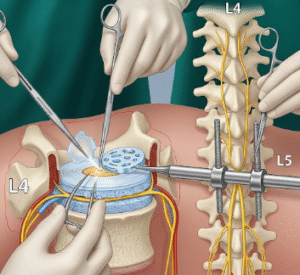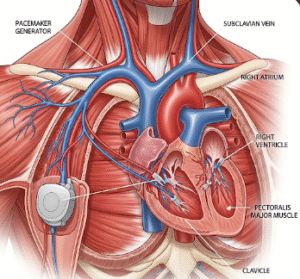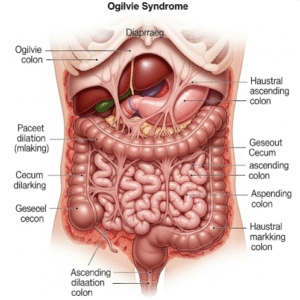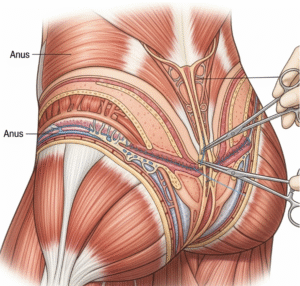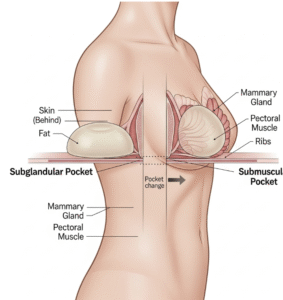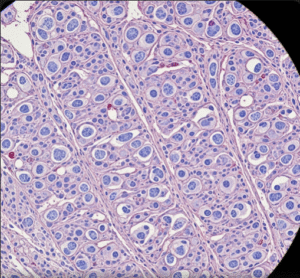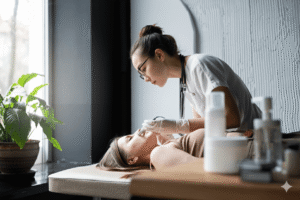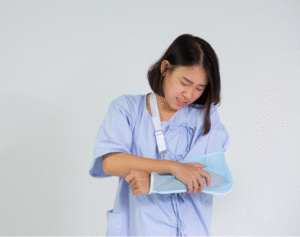What It Is
Trap muscle resection, also known as trapezius muscle reduction or trapezius muscle resection, is a cosmetic procedure that reduces the bulk of the upper trapezius muscle to create a longer, slimmer, and more elegant neckline. The trapezius is a large back and shoulder muscle that, when overly developed or bulky, can make the shoulders look wide and the neck appear shorter.
In Korea, this surgery is performed using advanced techniques, either by surgically resecting part of the trapezius muscle or by selectively cutting the nerve branches that supply it (neurectomy). Some clinics also use Botox injections as a non-surgical alternative for muscle reduction.
Why It’s Done
Patients undergo trap muscle resection because:
- They want a slimmer, longer, and more feminine neckline.
- Overdeveloped trapezius muscles make the shoulders appear too wide or masculine.
- It enhances the results of shoulder reduction or clavicle shortening surgeries.
- It provides a permanent alternative to Botox injections, which require repeated sessions.
Good candidates include:
- Women or men with naturally bulky trapezius muscles.
- Patients seeking a more delicate and refined upper body contour.
- Those in good health with realistic expectations.
Alternatives
- Botox injections: A popular non-surgical option in Korea to temporarily relax and slim the trapezius muscles (lasts 6–9 months).
- Shoulder reduction (clavicle shortening): Surgically narrows shoulder width for more dramatic results.
- Posture correction and physical therapy: Can reduce trapezius strain but not muscle size.
- No treatment: Suitable if neck and shoulder appearance is not a major concern.
Preparation
Before undergoing trapezius resection in Korea, patients will:
- Have a physical evaluation and muscle analysis.
- Discuss expected neckline length and shoulder contour with the surgeon.
- Stop smoking and alcohol 2–4 weeks before surgery.
- Avoid blood-thinning medications and supplements.
How It’s Done
- Anesthesia: General anesthesia or local with sedation, depending on the extent of the procedure.
- Incision: Small incisions are made along the back or neckline, usually hidden in natural folds.
- Muscle resection: A portion of the trapezius muscle is removed, or selective nerve branches are cut to reduce muscle activity.
- Closure: Sutures are placed, and compression dressings may be applied.
- Duration: 1–2 hours, outpatient or short hospital stay.
Recovery
- First week: Swelling, soreness, and tightness in the neck and shoulders.
- Return to activities: Most patients resume light activities within 7–10 days; strenuous exercise avoided for 4–6 weeks.
- Final results: A slimmer, longer neckline and reduced trapezius bulk are seen within 1–3 months as healing progresses.
Possible Complications
- Asymmetry between shoulders or neckline.
- Muscle weakness in the upper back or neck.
- Numbness or tingling due to nerve involvement.
- Visible scarring (usually minimal with hidden incisions).
- Rare risks: infection, excessive bleeding, or functional limitations.
Treatment Options in Korea
Diagnosis
Korean surgeons use physical examination, 3D body scans, and photography to evaluate trapezius muscle bulk and plan the degree of reduction.
Medical Treatments
- Botox injections to relax the trapezius muscle, providing a slimmer neckline without surgery.
- Pain management therapy for patients with trapezius tension from posture or stress.
Surgical or Advanced Therapies
- Trap muscle resection (partial removal of muscle bulk) for permanent slimming.
- Trap neurectomy (cutting motor nerve branches) to reduce muscle activity.
- Combination with clavicle shortening for dramatic shoulder slimming.
- Neck liposuction if excess fat contributes to a short or bulky neckline.
Rehabilitation and Support
- Physical therapy to support neck and shoulder function after surgery.
- Scar management with silicone gels or laser if needed.
- Regular follow-ups to assess symmetry and functional recovery.
- International patients benefit from Korea’s refined aesthetic surgical planning, advanced muscle-reducing techniques, and specialized aftercare programs


